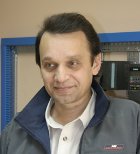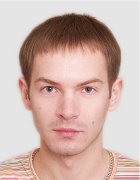ICo-op
Industrial Cooperation and Creative Engineering Education based on Remote Engineering and Virtual Instrumentation
530278-TEMPUS-1-2012-1-DE-TEMPUS-JPHES
Internal Deliverable 3.4.2
Learning Module:
Modeling of electromechanical systems
Editor: Alexander Osychev
Executive Summary
The course provides students with the knowledge and practical skills that are necessary for mathematical and computerized simulation of electromechanical systems of automatic control (based on electric drive). This course is a tool for further studying of various systems of electric drives control during the process of education and self-learning.
Course objectives
Objectives of the course: Shape student’s understanding of the role and place of simulation as a new tool of daily engineering and scientific activities. Provide knowledge of interrelation and variety of mathematical models representation in the time domain, in the frequency domain and the Laplace image domain, including the use of the matrix device. Establish connection of the subject “Modeling of electromechanical systems” with the information of other vocation-related subjects of senior courses taught by lector.
To obtain the specified knowledge and skills, students should be familiar with physics, the fundamentals of electrical technology, theory of automatic control, electrical machines and theory of electric drive, and have the basic skills of working in the Simulink Matlab package.
For postgraduate engineering education, the total course volume – 20 hours: lectures – 10 hours, laboratory works – 5 hours, individual task – 5 hours. The course includes 5 lectures, 2 laboratory works with the use of education platform National Instruments with the “Microdrives” boards, and also individual task.
Content
Theoretical Unit
Theme 1. Tasks and objectives of the course. Classification of studied models
1.1 Tasks and objectives of the course
1.2 The concept of “Modeling”. The main types of models
Theme 2 (Lecture 2 – Lecture 3). Models representation of linear electromechanical systems in continuous time
2.1 Order of model forming
2.2 Representation forms of mathematical models
Theme 3 (Lecture 4 – Lecture 5). Representation of mathematical models of electromechanical devices in discrete time
3.1 Difference equations and transfer functions
3.2 Transfer functions of integrators of discrete time
Laboratory workshop
Laboratory work Tuning of the dependent control systems with different controllers
Practical work (individual tasks): Parameters calculation of double-closed loop speed control system
Team



